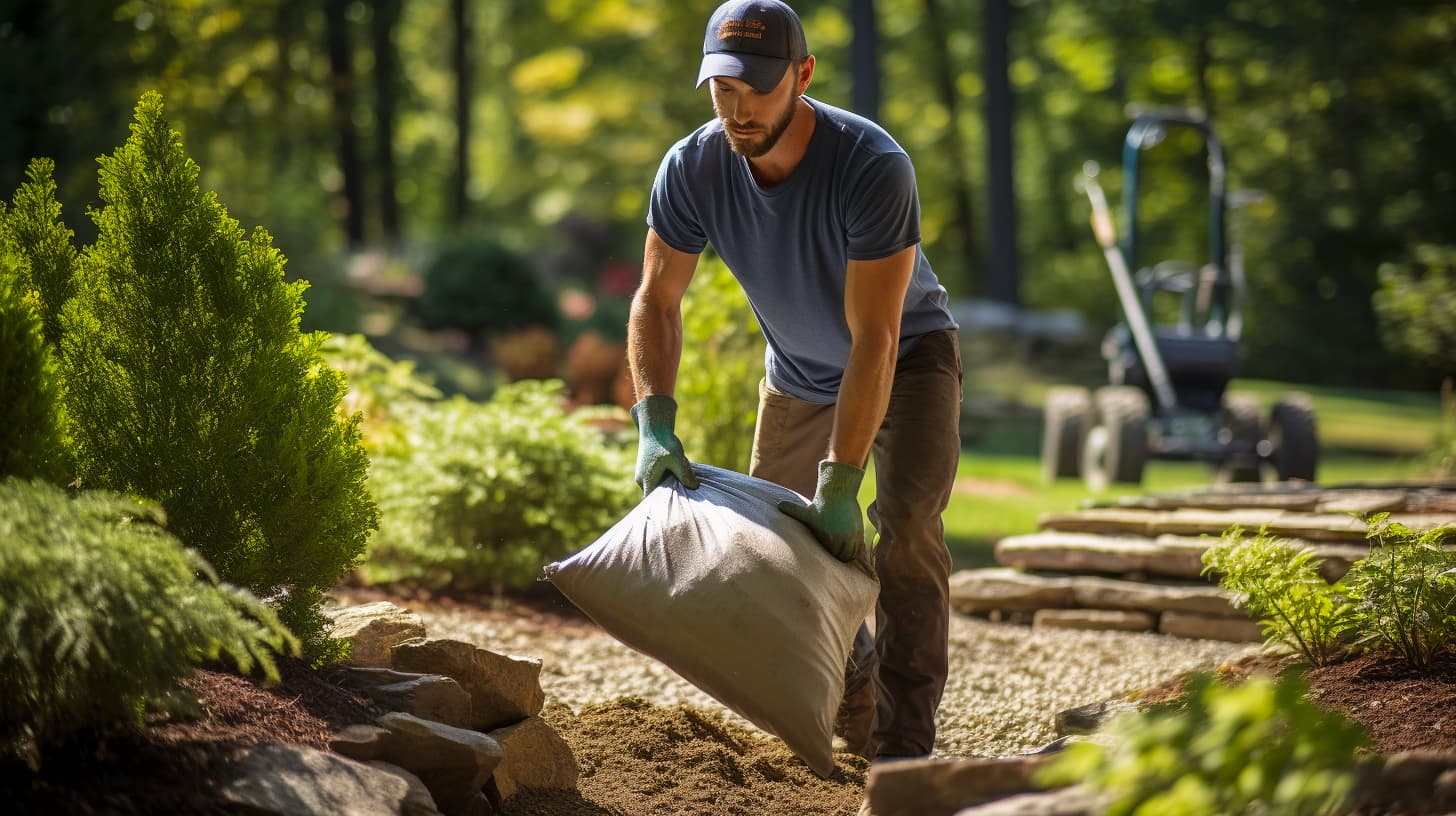Is Landscaping Bad for the Body?
Introduction #
Landscaping, often seen as a harmonious blend of art and nature, is not just about creating beautiful outdoor spaces. It’s a physically demanding task that can impact the body in various ways. In this exploration, we delve into how landscaping affects our physical health, balancing its challenges with its undeniable benefits.
What Makes Landscaping Physically Demanding? #

Musculoskeletal Injuries: The Hidden Challenge of Landscaping #
Landscaping is not just about creativity; it’s also a test of physical endurance. Common musculoskeletal injuries include back pain, shoulder strains, and knee problems, often stemming from repetitive tasks and heavy lifting. These injuries underscore the importance of understanding one’s physical limits and the necessity of proper rest and recovery.
Ergonomics: The Key to Safe Landscaping #
Ergonomics is crucial in minimizing the risk of injury. Applying proper posture, correct lifting techniques, and selecting tools designed to reduce strain can significantly prevent workplace injuries. For landscapers, being aware and applying ergonomic principles is essential for a safer work environment.
Combatting Heat Stress and Dehydration #
When working outdoors, especially in high temperatures, heat stress and dehydration are serious concerns. Regular hydration and taking breaks are vital to avoid heat exhaustion, a condition with potentially severe health implications if overlooked.
Navigating Sun Exposure Safely #
While some sun exposure is beneficial, it also poses risks like sunburn and long-term skin damage. Landscapers should protect themselves by wearing appropriate clothing, using sunscreen, and working in shaded areas whenever possible, to ensure safe and healthy sun exposure during their tasks.
Exposure to Chemicals and Dust: A Landscaping Hazard #
A significant aspect of the physical demands in landscaping is the risk of exposure to chemicals and dust. Landscapers often work with a variety of chemicals, including pesticides, herbicides, and fertilizers. These substances can pose health risks if not handled properly, leading to skin irritation, respiratory issues, or more severe long-term health effects. It’s crucial for landscapers to use personal protective equipment (PPE) such as gloves, masks, and protective clothing when handling these chemicals.
Dust exposure is another concern, especially when working with soil, sand, and stone materials. Prolonged inhalation of dust particles can lead to respiratory problems, including allergic reactions and conditions like silicosis, particularly when dealing with silica-containing materials. The use of dust masks or respirators becomes essential in such scenarios to filter out harmful particles
Health Benefits of Landscaping #

Physical Activity: A Natural Workout #
Landscaping offers a natural form of exercise, engaging various muscle groups. This outdoor activity not only aids in building strength and enhancing cardiovascular health but also promotes overall physical fitness, making it a holistic workout.
Stress Reduction and Mental Wellbeing #
The calming effect of working with nature cannot be overstated. Landscaping reduces stress and promotes mental health benefits, offering a serene escape from the hustle of daily life. This activity fosters a sense of accomplishment and tranquility, contributing significantly to one’s mental wellbeing.
Sunlight: The Vitamin D Boost #
Engaging in landscaping activities outdoors exposes individuals to sunlight, which is essential for Vitamin D production. This not only strengthens bones but also boosts mood and immune function, showcasing another vital health benefit of this rewarding activity.
Ergonomic Equipment Design #
Ergonomic Equipment: A Landscaper’s Ally #
Ergonomically designed equipment is transforming landscaping. Tools shaped to fit the hand comfortably, reduce strain, and increase efficiency are revolutionizing how tasks are performed. Such designs not only enhance productivity but also play a significant role in preventing overuse injuries, making landscaping a more sustainable profession.
Environmental Allergens and Landscaping #
Navigating Allergens in the Great Outdoors #
Landscapers often face challenges with environmental allergens like pollen and mold. Awareness and proactive measures, such as wearing protective masks and understanding individual allergen triggers, are essential. These steps help in minimizing allergic reactions, ensuring a healthier and more comfortable working environment in nature’s embrace.
What You Can Do to Avoid Injuries While Landscaping #
Age and Physical Fitness: Adapting to Your Body #
Landscaping requires acknowledging and adapting to your body’s capabilities, especially as you age. Older landscapers or those with varying physical fitness levels should tailor their tasks, perhaps focusing on less strenuous activities, to avoid overexertion and injury.
Preventative Measures: The Key to Safe Landscaping #
Preventing injuries in landscaping involves a combination of strategies. Regular stretching and warm-up routines are essential to prepare the body for physical work. Additionally, adopting recovery strategies and using proper techniques and equipment can significantly reduce the risk of injuries, ensuring a safer and more enjoyable landscaping experience.
Conclusion #
In conclusion, while landscaping poses physical demands, ranging from musculoskeletal risks to sun exposure, it also offers substantial health benefits like exercise, stress relief, and Vitamin D production. By utilizing ergonomic tools, understanding environmental risks, and adopting preventative measures, one can enjoy the art of landscaping while safeguarding their health and wellbeing.
Health Resources For Landscapers. #
-
Occupational Safety and Health Administration (OSHA): OSHA provides extensive information on the hazards and safety solutions in landscape and horticultural services. They discuss the risks associated with using machinery and tools in landscaping, emphasizing the importance of using equipment safely to prevent accidents and injuries.
-
Centers for Disease Control and Prevention (CDC): The CDC highlights the risks of heat-related illnesses in landscaping and tree care work. It provides detailed statistics and information on the incidence rates for nonfatal occupational injuries and illnesses in the landscaping industry. Additionally, the CDC discusses the importance of protecting workers from heat illness and offers insights into the various health risks associated with landscaping work.
-
National Institute for Occupational Safety and Health (NIOSH): NIOSH offers publications and safety topic pages related to occupational exposure to heat and hot environments, as well as specific conditions like rhabdomyolysis, which can be a concern for landscapers working in high-temperature conditions.